Art & Exhibitions
Why the Artistic Directors of the Gwangju Biennial Are Quarantining for Weeks (and Working Overtime) to Mount a Show Very Few People Will See
Is this the biennial model of the future?
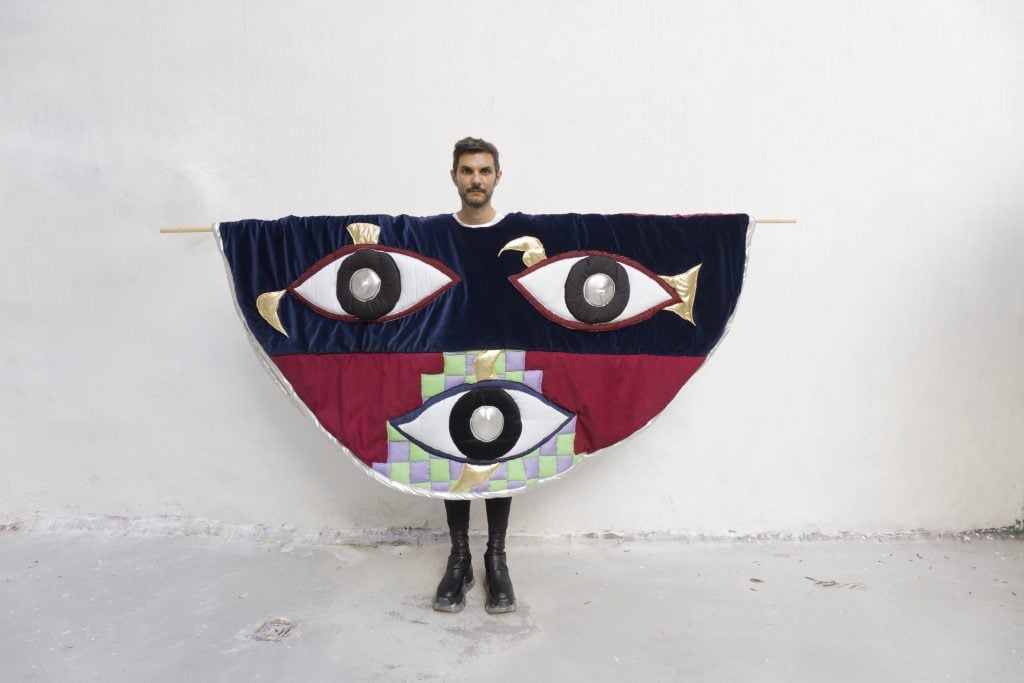
Is this the biennial model of the future?

Kate Brown

Angelo Plessas was doing plank pose in the narrow space between the foot of his bed and the hotel wall. Several of his quilted sculptures were spread out beneath him to soften the hard floor. Hotel staff dropped off warm meals several times a day.
“It is sort of like a residency,” the Greek artist told me over a WhatsApp call on day seven of his 14-day quarantine in an 18-square-meter room in Seoul. (The artist had been uploading the footage to Instagram as a kind of performative ritual.) Following his stay, Plessas planned to head to a sacred mountain to meet the South Korean shaman Dodam, with whom he is collaborating for the 13th Gwangju Biennial.
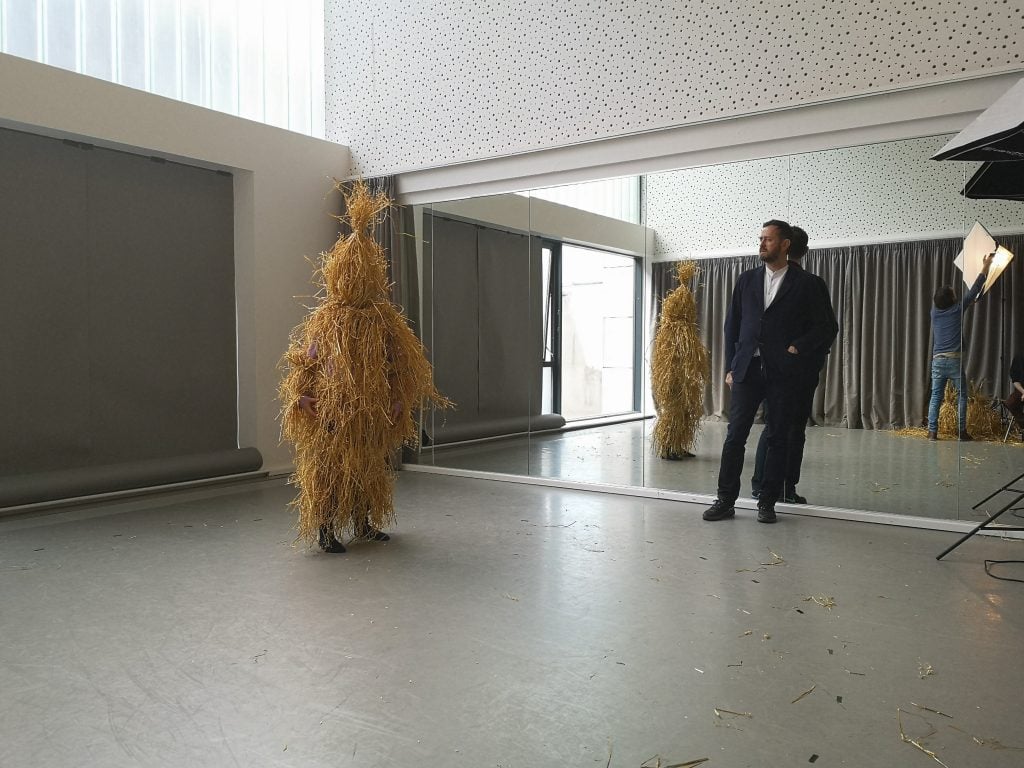
Production still from John Gerrard Mirror Pavilion: Leaf Work (Derrigimlagh) (2019). Courtesy of the artist.
It’s not exactly how Plessas imagined he would return to South Korea after an initial trip there in late 2019. Back then, a large group of international artists, shepherded by artistic directors Defne Ayas and Natasha Ginwala, went on a series of site visits ahead of the esteemed exhibition—Asia’s largest and oldest. At the time, the virus was perhaps already somewhere in the world, but it was nowhere near their imaginations.
Since then, Gwangju’s organizers have had to delay, adapt, rethink, and rework to accommodate a constantly shifting public-health situation. After two postponements, the biennial is preparing, finally, to open on April 1. (South Korea has been praised for its response to the pandemic; its most recent seven-day case count came in at under 500.)
Yet the opening will look very different from the buzzy biennials of previous years. Of the 69 participating artists (who are responsible for 41 new commissions), only four individuals—including a two-person collective—were able to travel to South Korea to install their works in situ.
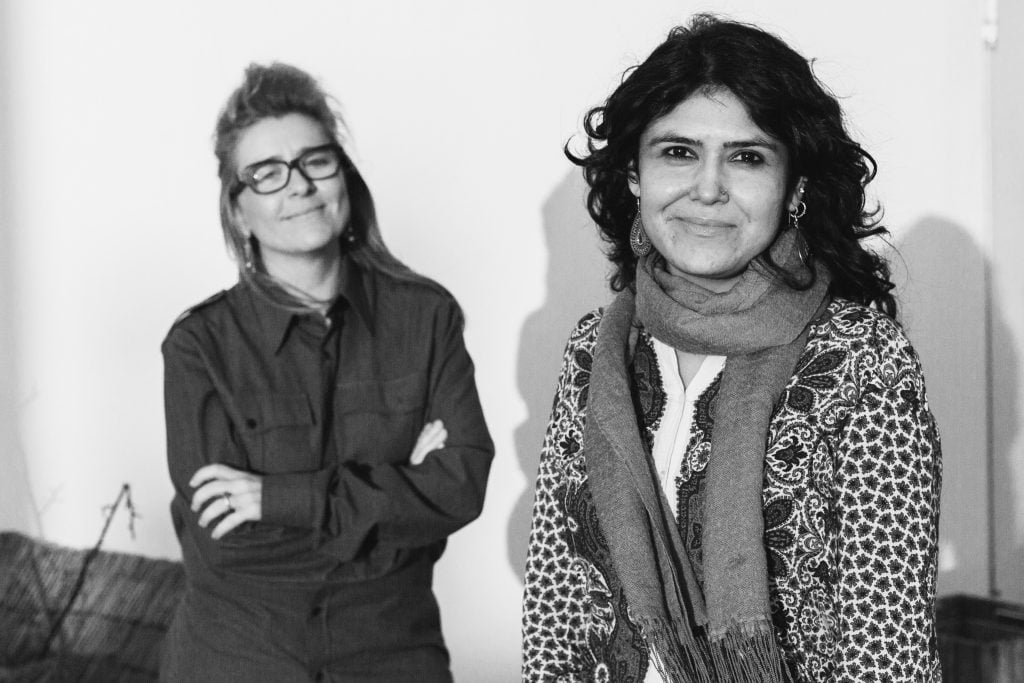
Natasha Ginwala (R) and Defne Ayas (L). Photo: Victoria Tomaschko.
The challenges posed by the lockdown era have rushed the biennial circuit into a future that many were already discussing. Had the daring, female-led show in South Korea intended to be a spectacle reminiscent of biennials past, it likely would have been rendered moot by the pandemic.
But neither Ayas nor Ginwala wanted to continue with “this machine of biennials,” as Ayas put it. Instead, they sought to offer an antidote to it, by exploring spirituality, resistance, and community healing. The events of 2020 gave those themes a new sense of urgency.
“We were ready to debunk the biennial format and stretch it, but we did not know we would be stretching it this much,” Ayas said with a laugh from her own room a few floors above Plessas. “The cracks we were looking into just got deeper.”
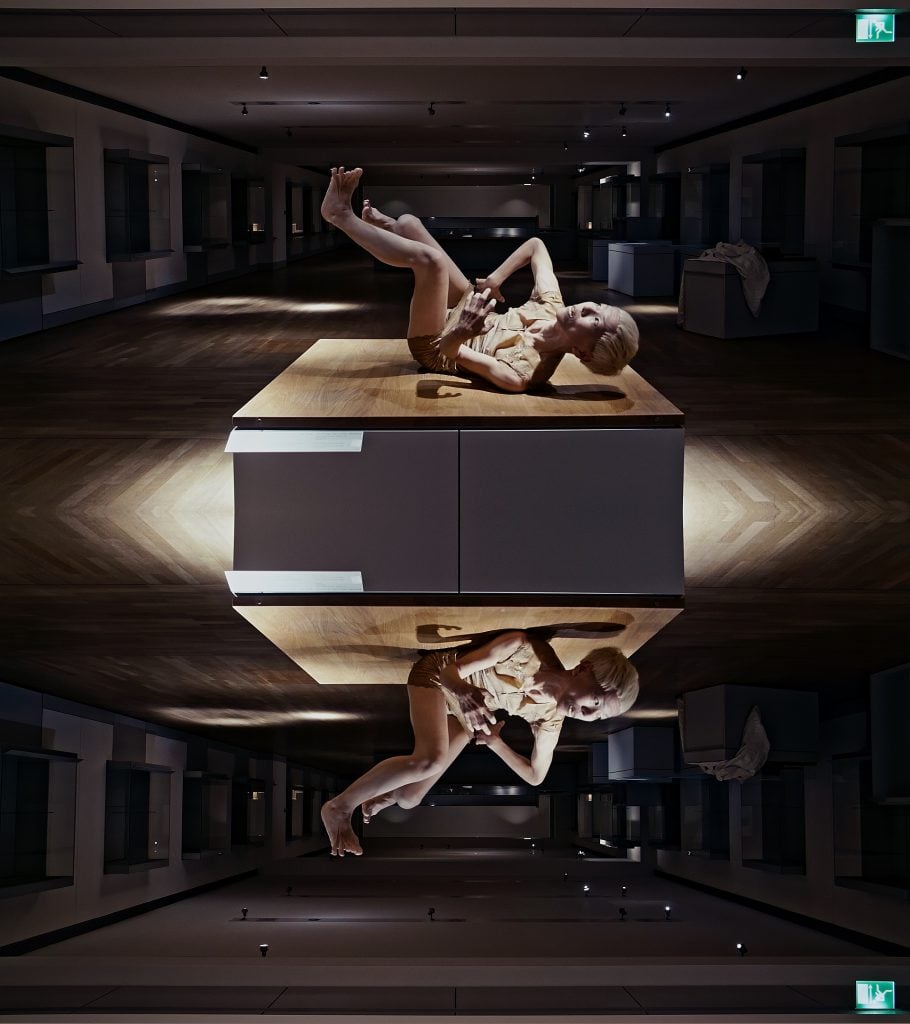
Video still from Theo Eshetu’s, Ghostdance (2020). Courtesy of the artist.
The biennial, titled “Minds Rising, Spirits Tuning,” comes at a moment when loss, grief, and separation are globally felt. And so the duo has gravitated toward two seemingly disparate themes: shamanism, a dominant form of spirituality in South Korea, and technology. A form of cosmic gravitas pulses through the exhibition’s preamble of essays, talks, and online programming.
The surreality of the enterprise was clear from conversations with a number of participants who traveled to Gwangju for the opening. All were performance artists whose works could not be presented remotely. Plessas, who came from Athens, shared his hotel wall with Canadian conceptual artist Judy Radul. They would see each other for brief moments when they picked up their food in the hall.
The show’s co-curator Defne Ayas, meanwhile, was in her room on video calls with Ginwala, who was already on the ground helping to install the show. It will be set across four locations over a now-shortened four weeks: a historic theater, a sacred mountain, a classical biennial hall, and the Gwangju National Museum. One could consider the Internet the fifth, unplanned venue.
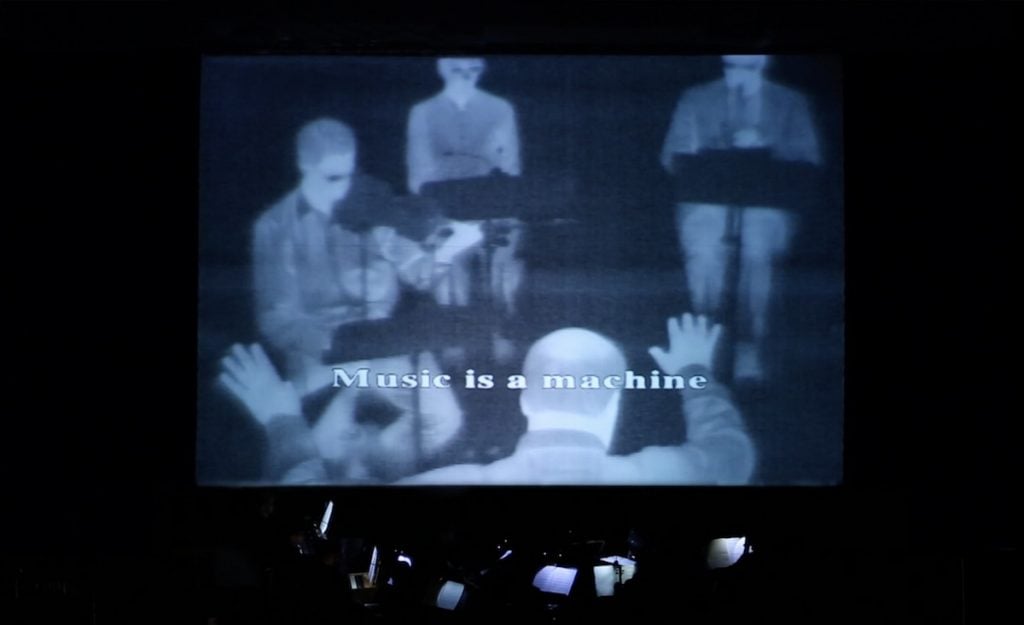
Still from Judy Radul’s Good Night Vision (2013). Courtesy the artist.
For the artists who did travel to Gwangju, the mandated pause was surprisingly welcome. “There is something special about stopping just before you make an artwork and waiting for two weeks, having the time to just keep thinking about it,” Radul said.
Ahead of the trip, she worked closely with two South Korean musicians on her eerily prescient commission. With help from Gina Hwang, who plays a geomungo (a plucked guitar-like instrument), and Hannah Kim (who plays the more percussive janggu drum and gong), Radul created a psychedelic, folkloric soundscape that she plans to record live inside a historic theater.
To film it, she long ago decided to use heat-tracking cameras—a medium she began exploring in 2013—that will record the heat imprints created by the musicians. Another camera will be pointed at the audience, should there be one come April. There is, of course, a certain irony to preparing this work in a world where free movement is contingent upon body temperature. (Radul was having her temperature taken at the hotel every few hours.)
“Proximity, touching, creating sound in a room together—all of this has shifted,” she said. “The questions around biennials, where we just drop in and drop out, have been posed for years now. It does make you wonder what you will do for art. We are finding out right now what artists actually bring to a scenario when they show up or don’t show up.”

∞OS Session, 2019, V.A.C. Foundation, photo: Marco Franceschin.
Participation in the show has been challenging even for artists who could not show up in person. Korakrit Arunanondchai’s new video, Songs for Dying, reflects on his own losses this past year, including the death of his grandfather. It pairs footage drawn from pro-democracy protests in Thailand (where Arunanondchai moved from New York at the beginning of the pandemic) and the 1948 Jeju Island massacre in South Korea with the minutiae that comes from witnessing the death of a loved one. His incisive editing—moving between surrealism, the news cycle, and a very personal narrative—feels fluid and familiar after the past year.
The artist directed the South Korea portion of the video—which captures a shaman conducting a ritual for the dead on Jeju Island—remotely after it became clear he would be unable to travel. “It was hard,” he said. “I work with hidden narratives to begin with. And often, the thing that pulls you in is not what you can find on the internet.” (The film’s second chapter, Songs for the Living, will be shown at the Migros Museum in Zurich in September.)
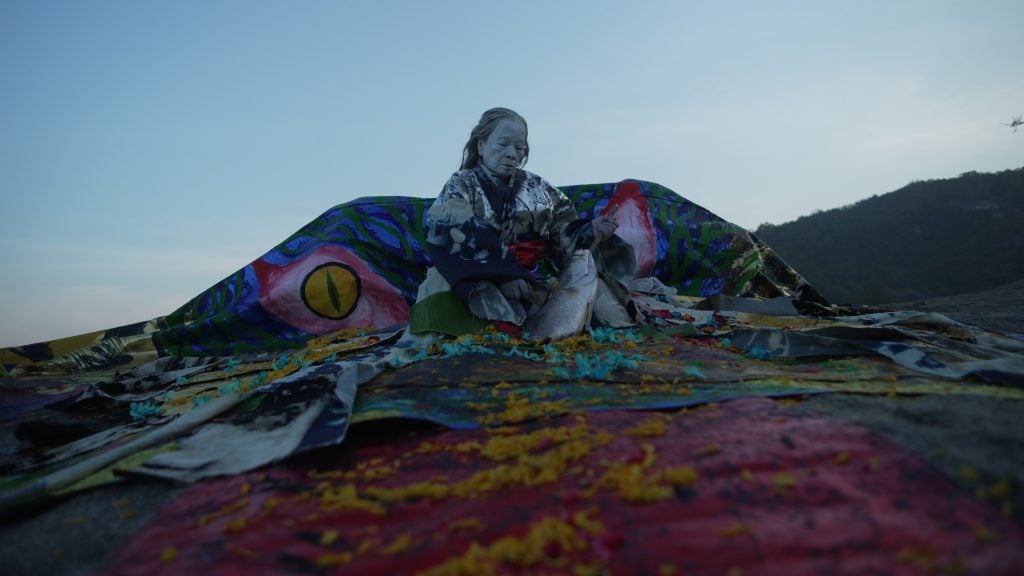
Video still from Korakrit Arunanondchai, Songs for Dying (2021). Co-commissioned by the 13th Gwangju Biennale, Han Nefkens Foundation and Kunsthall Trondheim. Courtesy the artist.
While the biennial plays an important role in the region—it was created to process and memorialize the Gwangju Uprising in 1980—attendance will necessarily be limited. Then, there is the so-called art world to consider. The traveling band of curators, writers, collectors, and art dealers that would normally attend will also be in absentia. Even the participating curators and artists will have packed up and left.
That’s where the fifth venue, the online forum, comes in. Artists have generously shared their processes and created new online commissions. The catalogue chronicles a year-long conversation that was once meant for Gwangju, but which has now become more global.
Ayas spoke of a “mad loyalty” that the artists and curators have for one another and for the project. All that matters, she says, is that it “installs itself” in people’s minds in some important way. “In our case, the biennial is not small, but we know from experience that small can also be beautiful and more meaningful,” she added.
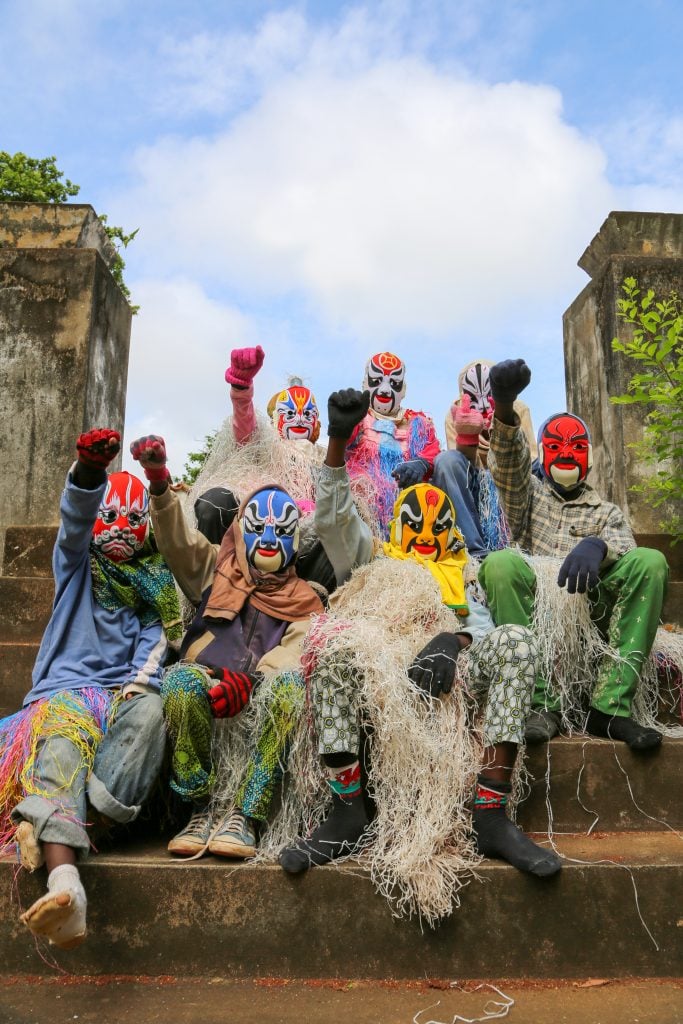
Emo de Medeiros, Kaleta/Kaleta (2016). Courtesy of the
artist.
Her conviction begs the question: how much did we really see of these massive shows when we were running around previews trying to take it all in? Perhaps the slow and virtual drip of “Minds Rising, Spirits Tuning” offers a teachable moment. Maybe we do not need to see the whole in order to be touched by a part.
“This biennial was prophetic, in a way, because it was predicting the penetration of the virtual and this post-human feeling of virtuality,” Plessas said from his hotel room. “It will be interesting to see how it will be remembered.”
The 13th Gwangju Biennale is on view from April 1 to May 9.